Under Desk Exercise vs. Standing Desks: Which Is Better?
Share
Under Desk Exercise vs. Standing Desks
Introduction: Choosing Movement That Works for You
Every day, millions of professionals face the silent threat of prolonged sitting—poor posture, low energy, stiff muscles, and the creeping risk of chronic health issues. Two popular remedies—under‑desk exercise and standing desks—offer different ways to fight back.
This post dives into both solutions, exploring the science, benefits, limitations, and real-world applicability. My goal? To help you feel energized, productive, and happy while you work—no matter how many hours you log.
Section 1: The Perks of Standing Desks
What’s good about standing desks?
- Breaks up your sitting time. Numerous studies suggest that even substituting sitting with light standing can improve posture, reduce back pain, and increase alertness.
- Lower back relief. Alternating between sitting and standing often reduces strain on the lower back.
- Better blood sugar control. Standing after meals helps blood sugar levels normalize more quickly.
Keep in mind the drawbacks:
- Not ideal to stand forever. Long periods of static standing may lead to leg discomfort, varicose veins, or circulatory strain.
- Limited calorie burn: Standing burns only slightly more calories than sitting—insufficient for weight management.
- Focus interruptions. Many find constant switching between standing and sitting distracts more than it helps.
Bottom line: Standing desks offer a subtle posture boost, but they don’t solve all sedentary pitfalls—especially if standing becomes static.
Section 2: The Power of Under Desk Exercise
Why it shines:
- Burns more calories. Studies show under‑desk pedaling increases energy expenditure by about 70–90 kcal/hour over sitting.
- Improves circulation & health. Even light seated pedaling for 30–90 minutes per day can enhance cardiometabolic markers and potentially extend lifespan.
- Boosts focus and mood. Gentle movement stimulates endorphins and concentration.
- Quiet, compact, accessible. Many models are small, portable, nearly silent, and easy to set up.
- Low-impact and joint-friendly. Ideal for anyone—especially those recovering from injuries or seniors.
- Engages multiple muscle groups. Pedaling targets quads, hamstrings, glutes, calves, hip flexors, and even activates core stabilizers.
What to watch out for:
- Distraction risk. Some may find deep focus work harder while moving.
- Desk clearance and setup. It needs enough under-desk space and stable seating.
- Modest weight loss. It's not a full workout replacement, but great for consistent, light movement.
Still, under‑desk exercisers deliver tangible health benefits with minimal disruption—making them a powerful tool for moving more every day.
Section 3: Side-by-Side Comparison Chart
|
Feature / Benefit |
Under Desk Exercise |
Standing Desk |
|
Calorie burn |
~70–90 kcal/hour extra via seated pedaling |
Minimal increase above sitting |
|
Circulation & metabolism |
Improved blood flow, metabolic benefits |
Some improvement, less effective than movement |
|
Muscular activity |
Legs + minor core engagement |
Primarily passive posture support |
|
Mood & focus |
Boosted via motion, endorphins |
Enhanced awareness, less lively than movement |
|
Joint impact |
Low-impact, gentle on joints |
May cause limb fatigue if used long periods |
|
Space & portability |
Compact, under-desk friendly |
Requires full desk setup, possibly larger and heavier |
|
Disruption to work |
Minor; focus-friendly for light tasks |
Can interrupt concentration if switching frequently |
|
Accessibility & cost |
Often affordable (from ~$50) |
Higher initial cost; adjustable desks may be expensive |
|
Health ROI (sedentary break) |
High—active break every minute |
Moderate—still static, even if upright |
Section 4: Real-World Edge = Under Desk Exercise
When you compare the two, under‑desk exercise consistently delivers higher calorie burn, better circulation, muscle engagement, and mental clarity—all while seated and quietly working. Standing desks offer posture variety but lack the health punch that motion brings.
As Mayo Clinic researchers suggest, active workstations—like combining standing and light movement—boost brainpower and help reduce sitting, without hurting job performance.
Section 5: Make It Your Daily Habit
Stand-and-move combo—best of both worlds!
- Start your day standing for 30 minutes.
- Switch to under-desk pedaling for bursts during deep work.
- Use timers (every 45 minutes) to alternate in way that feels natural.
- Track your progress using models with digital displays or fitness apps.
Section 6: Your Recommendation — The Under Desk Exerciser
Let me introduce the excellent Under Desk Exerciser—a top-tier solution I recommend for anyone eager to get moving without leaving their seat.
- Exceptional design: Compact, quiet, and perfectly desk friendly.
- Adjustable resistance: Customize intensity—from gentle to challenging.
- Multi-benefit: Encourages movement, supports circulation, and energizes your mind.
Whether you’re offsetting long Excel sessions or just want a healthier work routine, this exerciser is a game-changer. It’s a smart start toward reclaiming your health—grab yours here: Under Desk Exerciser and begin pedaling toward better health today.
Conclusion: Which Is Better?
- For subtle posture support? Standing desks help—but don’t move much.
- For actual health gains and productivity? Under-desk exercise is the better choice.
- Best of both: Alternate between standing and under-desk pedaling to combine posture, motion, and mental clarity.
Movement is the secret sauce. It’s not about extreme workouts—it’s about consistent, gentle activity woven right into your workday. The Under Desk Exerciser is your silent but powerful movement partner. Here’s to a healthier, happier desk life!
